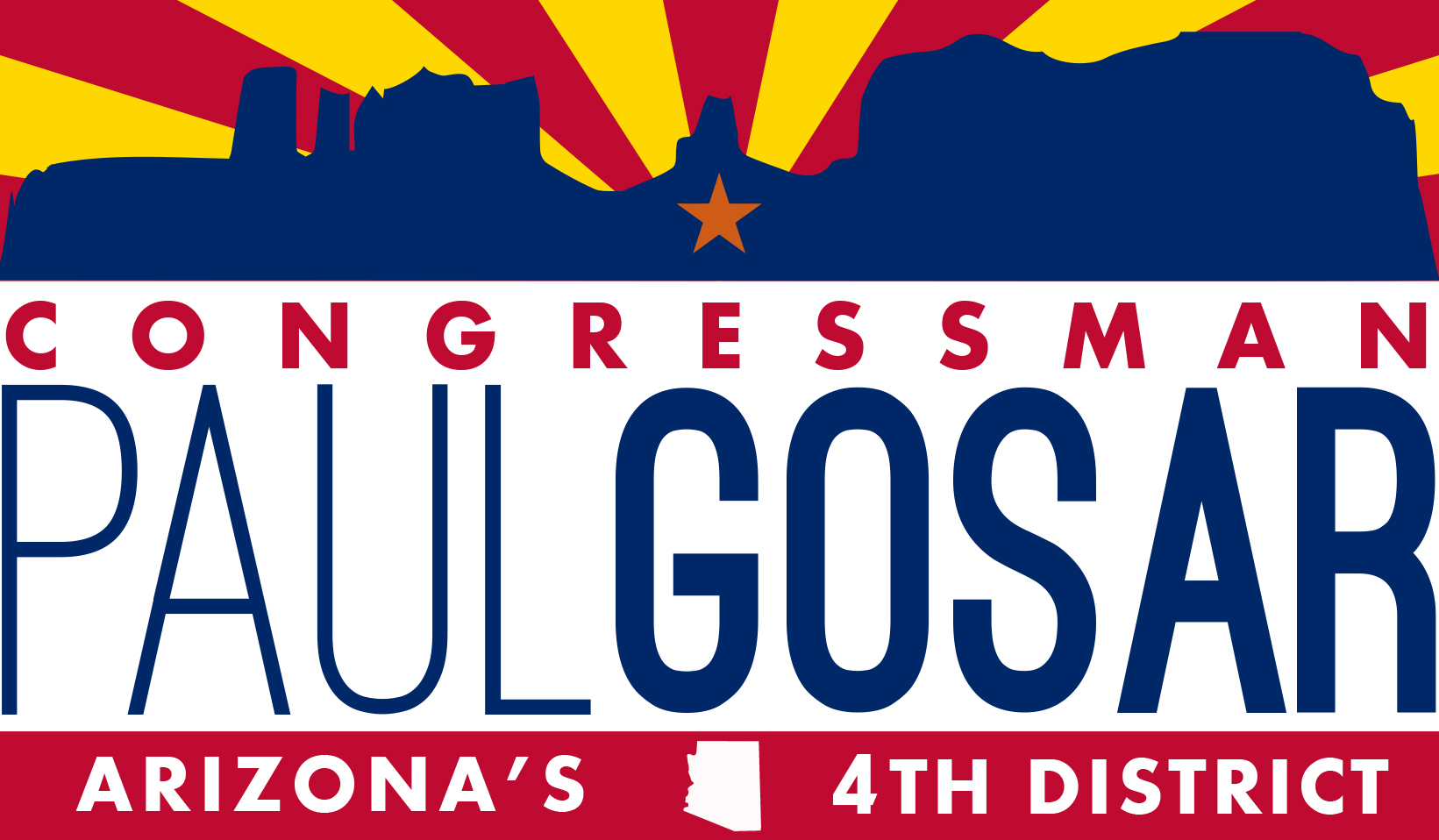|
Today, U.S. Congressman Paul A. Gosar, D.D.S. (AZ-04) released the following statement after the Congressman’s amendment to block the U.S. Fish and Wildlife Service (the Service) from listing Sonoran Desert Tortoise (SDT) as an endangered or threatened species passed the House of Representatives and was successfully attached to the Interior, Environment and Related Agencies Appropriations Act for Fiscal Year 2016:
“The Sonoran Desert Tortoise is part of a growing problem involving large settlements with environmental groups who sue the U.S. Fish and Wildlife Service for regulatory protection of a large number of different wildlife and plant species. These multi-district litigation settlements force the Service to make listing decisions on several hundred species, often with little or no scientific data supporting these listings and without public input in this process. This possible listing is a result of a lawsuit filed by a few special interest groups aimed at stifling development and has little to nothing to do with the tortoise.
“Allowing the Sonoran Desert Tortoise to be listed as an Endangered Species would be game over for Arizona. Tying up 15 million acres, 4.5 million acres of which are State Trust land, with new regulations and red tape would cause considerable damage to education, grazing, agriculture, energy and housing interests as well as exacerbate wildfire mitigation challenges. The House took bold action today to protect Arizona’s economy and for that I am grateful.”
Background
Of the potential 26.8 million acres that will likely be designated for critical habitat due to such a listing, 15 million acres are in Arizona, 4.5 million acres of which are State Trust land.
State Trust land revenues—currently enjoyed by 13 beneficiaries, of which K-12 education is the largest proportional share of those monies—will be severely impacted by designating this species as threatened or endangered. If the Sonoran desert tortoise is listed, those acres of Trust land become less valuable for investment as they are burdened with a federal regulatory nexus. One of the significant consequences would be less money flowing into education coffers.
The Sonoran desert tortoise is also of substantial concern to many different types of industry as its habitat falls within urban development corridors, as well as rural and agricultural landscapes. Listing the species as threatened or endangered will negatively impact commercial, housing and energy developers as well as the agriculture and grazing industry. Specifically, a listing would be detrimental for 273 different grazing allotments and jeopardize nearly six million acres used for livestock grazing.
Mining will also suffer as the BLM listed 9,675 new mining claims from 1990 to 2002, 36% of which fall within Sonoran desert tortoise’s habitat. Any ground and vegetation-disturbing activities, including fire suppression activities and restorative treatments, would also be negatively impacted by a listing decision for this species. Solar energy would also likely be harmed as “large solar projects on desert floors” are considered a potential threat to the Sonoran desert tortoise.
Congressman Gosar’s amendment is endorsed by: Public Lands Council, National Cattlemen’s Beef Association, Americans for Limited Government, Arizona Cattleman’s Association, Arizona Farm Bureau, Arizona Mining Association, Arizona Cattle Growers’ Association, Arizona Cattle Feeders' Association, Arizona Rock Products Association, the Homebuilders Association of Central Arizona, Coconino County Farm Bureau and Cattle Growers Association, Yavapai Cattle Growers Association, Navajo/Apache Cattle Growers Association, Greenlee Cattle Growers Association, La Paz Stockmen’s Association, Mohave Livestock Association, Gila County Cattle Growers Association, Maricopa County Cattle Growers Association, Cochise /Graham Cattle Growers Association, Southern Arizona Cattlemen's Protective Association and the Yavapai County Board of Supervisors.
The Fish and Wildlife Service isn’t exactly sure what the actual tortoise problem is and have identified numerous possible threats that may or may not be impacting the species. One of the top threats they identify is grassland fires and desert scrub that is prone to fires. Yet, a listing of the tortoise will reduce active wildfire management and lead to more fires.
The Service all sites possible factors in Mexico, including grassland conversion programs and fire wood collection that takes place. Nearly 50% of the Sonoran desert tortoise range occurs in Mexico, and resultantly, the USFWS considers the impacts to the tortoise throughout its “entire range” in making a “listing determination.” There is very little data available for Sonoran desert tortoise in Mexico and the U.S. has no jurisdictional authority in that country.
Other potential threats include “illegal collection…predation by domestic and feral dogs…genetic contamination and introduction of diseases from released captive tortoises that are used for pets… anticipated large solar projects on desert floors…drought that has affected forage”, etc.
It is clear that there are too many possible threats to determine what is or isn’t actually leading to the possible demise of the tortoise. Given these factors, we should not be causing significant harm to local economies by listing the Sonoran desert tortoise.
Furthermore, important local conservation efforts began for the species in 2010 and a Candidate Conservation Agreement was recently signed by 15 different agencies in February. Should the Sonoran desert tortoise become listed, these voluntary efforts and monies will dissipate as local property owners, ranchers and developers will no longer have an incentive to work with federal and state wildlife management agencies on conservation efforts for the species.
###

|

